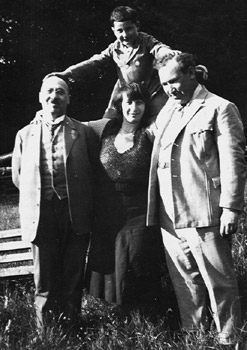Search for Names, Places and Biographies
Already layed Stumbling Stones
Suche
Dr. Max Besser * 1877
Hammer Landstraße 32 . (Hamburg-Mitte, Hamm)
entrechtet gedemütigt
Flucht in den Tod 07.11.1941
further stumbling stones in Hammer Landstraße 32 .:
Käthe Besser, Simon Katz
Max Besser, M.D., b. 28 Oct. 1877, d. 7 Nov. 1941 Hamburg
Käthe Besser, née Bischofswerder, b. 5 Jan. 1890, d. 7 Nov. 1941 Hamburg
Hammer Landstraße 32 (Dimpfelsweg 1)
"For economic reasons, Dr. Besser has to give up his Hamburg practice. Since he can find no further opportunities in Germany, he wants to begin a new life in rural Palestine. He intends to join the settlement of his son-in-law there, to advance and expand it, and to practice medicine. We deem the amount of assets he has requested for this purpose [1,000.00 Palestinian Pounds and used medical equipment worth 500.00 RM] to be justified, and give our approval.”
This letter from the "Public Office for Information and Counselling of Emigrants in Hamburg”, dated 21 June 1938, was required for Max Besser and his wife Käthe to leave for Palestine. Their daughter Mirjam, born 5 March 1909, and her husband, John Toeplitz, M.D., had already been living there since 1933. Everything seemed ready for the Bessers’ departure. It never took place, however, for reasons unknown.
Max Besser and his wife Käthe, originally from the Province of Posen, had been living in Hamburg since 1903. Max Besser was born on 28 October 1877 in Lissa, Käthe Besser née Bischofswerder on 5 January 1890 in Birnbaum.
On 10 March 1907, Max Besser applied for membership in the German-Israelite Congregation of Hamburg. Before World War I, his residence and practice were on Süderstrasse. While serving in uniform during World War I, he accumulated tax debts. Like all veterans, he received a deferment until his return from active duty. After the war, his practice moved to Dimpfelsweg 1, on the border between two Hamburg neighborhoods: the working-class Lower Hamm on the flood plain and, at higher elevation, the Upper Hamm of more prosperous professionals. A popular family physician, Max Besser earned a good income until 1936.
The ban on physicians practicing their profession did not immediately affect him due to his veteran status. However, after his health insurance license was revoked in 1938, his income declined sharply. He moved into a 4-room apartment at Bogenstrasse 15, which also served as his practice. In 1939, when it was clear that his emigration plans had failed, Max Besser received a license as "medical caregiver” for Jews. In January 1940, a security ordinance led to the confiscation of his assets and their replacement by a monthly stipend of 425.00 RM.
After the first deportation of Hamburg Jews to the East in October, 1941, the Bessers decided to take their own lives rather than await certain death at the hands of others. When they received the order to report on 8 November 1941 for deportation to Minsk—they were numbers 78 and 79 on the list—they took an overdose of sleeping pills. They left no Hamburg survivors. Käthe Besser’s mother, Selma Bischofswerder, was living in Berlin. By telegraph, she released the bodies for burial. Max and Käthe Besser now lie in the Jewish Cemetery of Ohlsdorf.
Translator: Almut und Paul Spalding, Jacksonville, USA
© Hildegard Thevs
Quellen: 1; 2 FVg 3585, R 1940/87; 4; 5; StaH, 522-1, Jüdische Gemeinden, o. Sign. Mitgliederzählung der DIGH 1928; 390 Wählerverzeichnis 1930; 391 Mitgliederliste 1935; Polizeibehörde – Unnatürliche Sterbefälle 1942/272; BA Bln., Volkszählung 1939; mündliche Mitteilungen Frau B.


